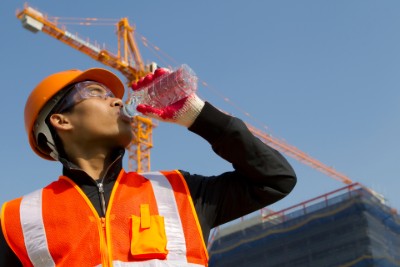The sun beats down on a construction site on a hot summer day. As temperatures rise, it’s crucial for contractors and workers to know the proper steps for avoiding heat stress and heat-related illness. Heat-related illnesses can range from mild symptoms such as heat rash and heat cramps to severe conditions including heat exhaustion and heat stroke, which can be fatal.
crucial for contractors and workers to know the proper steps for avoiding heat stress and heat-related illness. Heat-related illnesses can range from mild symptoms such as heat rash and heat cramps to severe conditions including heat exhaustion and heat stroke, which can be fatal.
At its recent meeting in Washington, DC, the ANSI/ASSP A10 Committee took the first step in creating a document that will identify industry best practices for properly managing heat stress for workers involved in construction and demolition. The proposed American National Standard under ANSI, BSR/ASSP A10.50, will establish minimum requirements for the prevention of heat illnesses and management of heat stress hazards and exposures encountered during construction and demolition.
“There are tens of thousands of heat-related illnesses that impact the construction and demolition workforce each year and unfortunately, construction workers are still dying from exposures to excessive heat,” says John Johnson, chair of the ANSI/ASSP A10 Committee. “The proposed A10.50 standard will provide the industry with proven solutions to avoid heat illnesses that impact the construction and demolition workforce.”
Currently, there is no federal OSHA standard or voluntary consensus standard which addresses the issue of heat stress, although many groups have requested guidance on best practices. The A10 committee hopes that the creation of such a document helps employers develop effective heat stress policies and procedures.
"A handful of state regulatory agencies have provided guidance to their employers via regulation,” says Johnson. “This consensus standard will utilize best industry practices and real-world experiences to provide clear direction to users, bridging the regulatory gap that presently exists.”
Related Links
How to Recognize and Prevent Occupational Heat Stress
Heat Illness: A Descriptive Analysis Within the U.S. Construction Industry
Fire & Ice: Protecting Workers in Extreme Temperatures
Heat Stress: Understanding Factors & Measures Helps SH&E Professionals Take a Proactive Management Approach